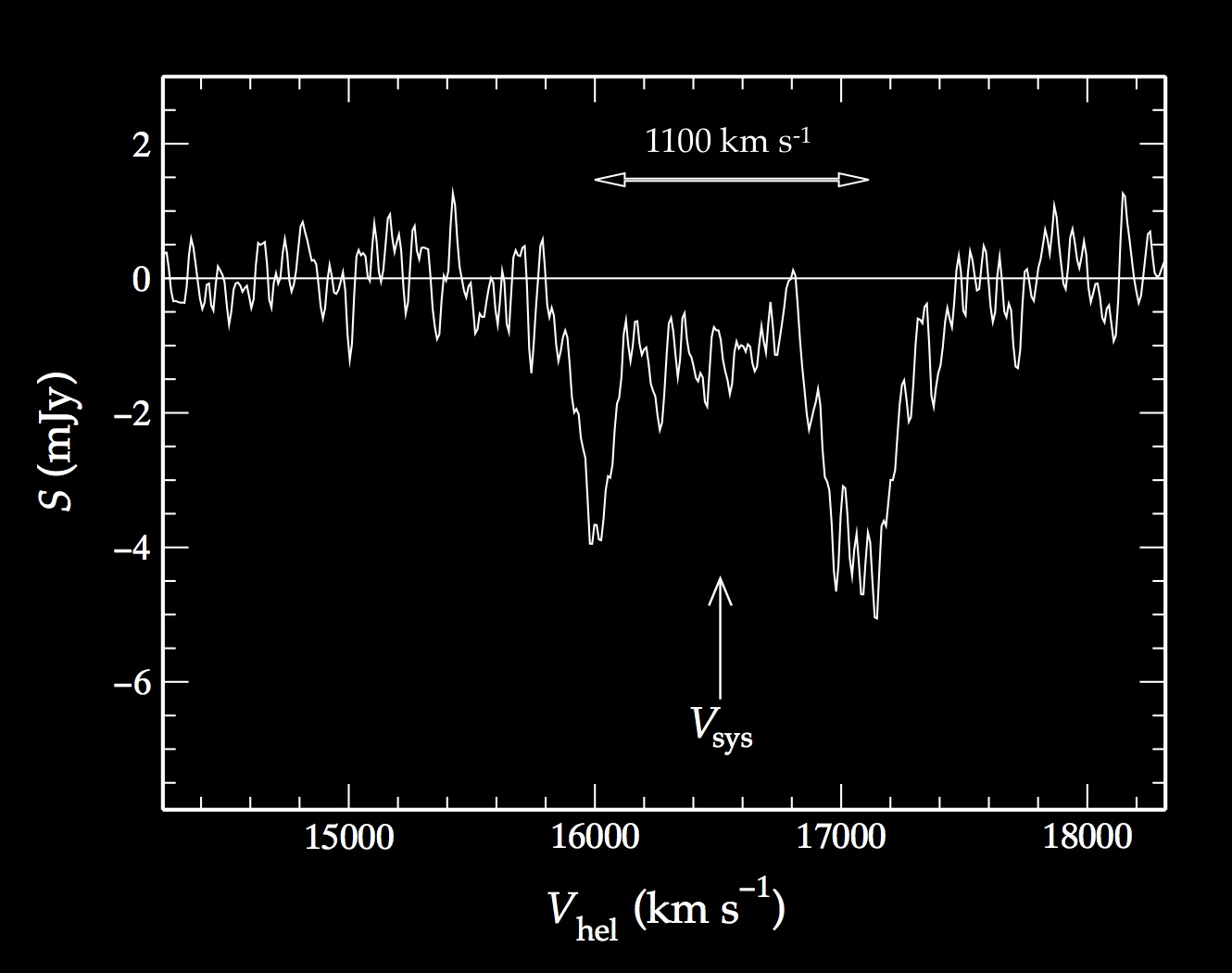Daily Image
03-03-2009WSRT finds supermassive binary black hole?
| Submitter: | Raffaella Morganti |
| Description: | Black holes are perhaps the most enigmatic objects in the universe. Things get even more exciting with a binary black hole, i.e. two black holes orbiting each other. WSRT observations may have revealed such a binary black hole. It is thought that every galaxy has a black hole, weighing more than 100 million times the sun, in its centre. If every galaxy has a supermassive black hole, this means that if two galaxies collide, the two black holes will meet. When this happens, it is expected that the two black holes start to orbit around each other and form a binary system, Depending on circumstances, the two black holes may eventually merge to form a single, even more massive supermassive black hole. Because galaxy collisions occur frequently, one would expect that many cases of binary black holes would be known. It is easy to infer the presence of a solitary supermassive black hole because its immediate environment emits large amounts of energy. It turns out to be much more difficult to find evidence for binary black holes. The main reason is that the separation between the two black holes is expected to be very small, making them hard to distinguish from a single, solitary black hole. Nevertheless, observations with the WSRT may have revealed a binary supermassive black hole. The radio spectrum of the source 4C37.11 shows very broad absorption by neutral hydrogen. A model that may explain the absorption in 4C37.11 is that it is caused by two objects orbiting each other with velocities of just over 1000 km/s. Such high orbital velocities in such a compact object cannot be explained by the normal rotation of stars but instead would imply the existence of two supermassive black holes. Higher spatial resolution observations are needed to confirm the binary block hole hypothesis. If it turns out to be correct, HI absorption studies may allow us to find many more binary black holes. For more details, see the letter accepted for Astronomy & Astrophysics: Morganti, R., Emonts, E. & Oosterloo, T: "Broad HI absorption in the candidate binary black-hole 4C37.11 (B2 0402+379)", http://arxiv.org/abs/0902.0863 |
| Copyright: | Astron |
| Tweet |  |
